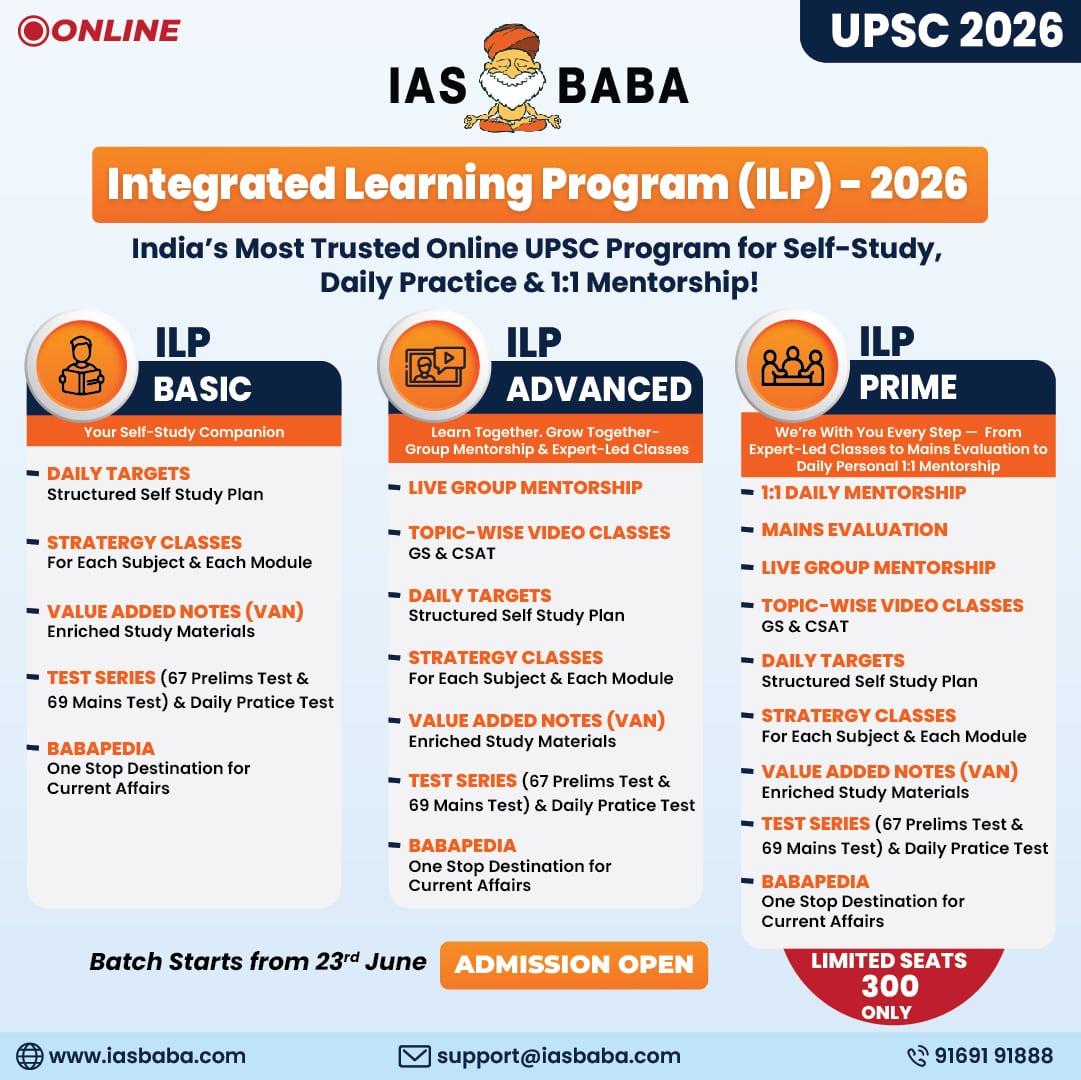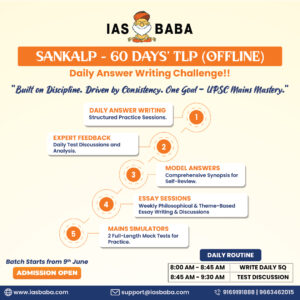Indian Economy, TLP-UPSC Mains Answer Writing
Q. 4. “The Public Distribution System (PDS) is a lifeline for the poor but suffers from substantial leakages and inefficiencies.” Examine the objectives, structural flaws, and digital solutions required to overhaul the PDS. (250 words, 15 marks)
Introduction
India’s Public Distribution System (PDS) distributes over 60 million tonnes of food grains annually to nearly 80 crore people. Despite its wide reach, it remains plagued by leakages, diversion, and exclusion errors, demanding urgent systemic reforms.
Body
Objectives of the Public Distribution System
- Food security for the poor: PDS ensures nutritional access for vulnerable groups, particularly under the National Food Security Act, 2013 (NFSA).
- Price stabilisation: Helps regulate food grain prices in the open market and curb inflation during shortages.
- Buffer stock management: Supports offtake from FCI warehouses and helps maintain food reserves.
- Social justice: Acts as a welfare mechanism by ensuring entitlement-based delivery to marginalised communities.
Structural Flaws in the PDS
- Leakages and diversion: Economic Survey 2020-21 estimated over 36% of PDS grains do not reach beneficiaries due to pilferage and corruption.
- Exclusion and inclusion errors: NITI Aayog (2022) noted crores of eligible poor excluded due to flawed databases; many ineligible continue to receive rations.
- Poor targeting and duplication: Ghost cards, duplicate entries, and fake beneficiaries weaken the system’s credibility and efficiency.
- Lack of transparency and accountability: Manual records and weak grievance redressal foster non-transparency and reduce public trust.
Digital Solutions to Strengthen PDS
- Aadhaar-based authentication: As per UIDAI and Ministry of Consumer Affairs, over 95% of ration cards are now seeded with Aadhaar, reducing identity fraud.
- One Nation One Ration Card (ONORC): Enables portability across states; covers over 100 crore people, aiding migrant workers.
- End-to-end digitisation (Annavitran Portal): Tracks grain movement, enabling real time monitoring and reducing diversion at every level.
- ePoS machines: Installed in over 95% FPSs, enabling biometric verification, real-time updates, and stock transparency.
Government Initiatives
- NFSA, 2013: Covers 67% of population, ensures legal entitlement to food grains at subsidised prices.
- ONORC Scheme: Launched in 2019, ensures seamless ration portability across India. 3. IM-PDS Project: Strengthens interstate portability, and data sharing among states. 4. Digitisation drive: Under Digital India, most states have completed beneficiary and supply chain digitisation.
Way Forward
- Targeted subsidy via DBT: Adopt pilot models from Chandigarh and Puducherry, where cash transfer for food ensures choice and efficiency.
- Strengthen grievance redressal: As suggested by Shanta Kumar Committee (2015), set up independent social audit units and toll-free help centres.
- Periodic beneficiary updating: Regular deletion of ineligible names and inclusion drives using Socio Economic Caste Census (SECC) data.
- Integrate supply chain tech: Use blockchain pilots from states like Andhra Pradesh to ensure tamper-proof tracking of food grains.
Conclusion
To transform PDS into a modern, transparent, and inclusive food safety net, digital reform must align with beneficiary empowerment. Effective use of technology and targeted delivery can convert PDS from a leaky lifeline into a resilient system.











